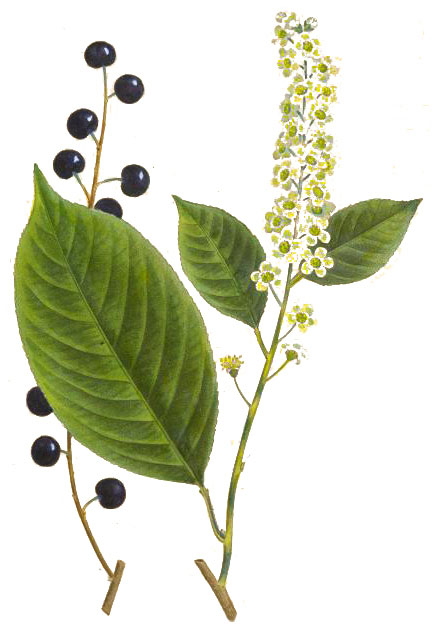
Quick Facts
- Plant Type: Conical in youth becoming oval when mature
- Foliage type: Deciduous
- Tree height: 25 to (rarely) 100 feet
- Tree width/spread: 50 feet
- Hardiness: USDA Zones 6 to 9
- Flower Color: Small, fragrant, white
- Sun/light exposure: Full sun to part shade
- Water requirements: Not particular
- Seasonal Interest: In the fall leaves turn vibrant yellow, orange, red and purple
Black Cherry (Prunus serotina)
The largest and most important native cherry, it is found through the eastern United States and west into eastern Texas, and in southeastern Canada. There are isolated populations in Mexico and Guatemala
Small white flowers are held in slender drooping racemes after the glossy leaves have emerged. The dark red fruit changes to black from August through October. Fall foliage is yellow.
The crushed foliage and bark of Black Cherry has a distinctive cherry-like odor and bitter taste. Native Americans used it to make cough medicines and cold remedies. Our Wild Cherry Syrup, a cough medicine is obtained from the bark, and jelly and wine are prepared from the fruit. While the fruit is safe in beverages, it should not be eaten raw as it can be toxic.
Black Cherry’s valuable hard, reddish-brown wood takes a fine polish and is commercially valued for furniture, paneling, professional and scientific instruments, handles, and toys
Black Cherry is not a good tree for the average garden. They produce thousands of unwanted seedlings. It is often considered a weed and is classified an invasive species in Europe. Not surprising, few tree nurseries carry Black Cherry.
The Black Cherry tree in the Arboretum is thought to be a chance seedling.

